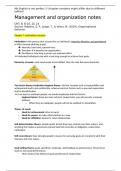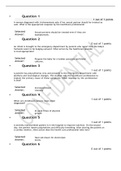Zusammenfassung
Management & Organization summary (book)
- Kurs
- Hochschule
- Book
This is a summary of the course management & organization based on the chapters needed for the exam. The numbers of the chapters in my summary might differ from the book (due to different editions), but I summarized the subjects needed for the exam.
[ Mehr anzeigen ]













